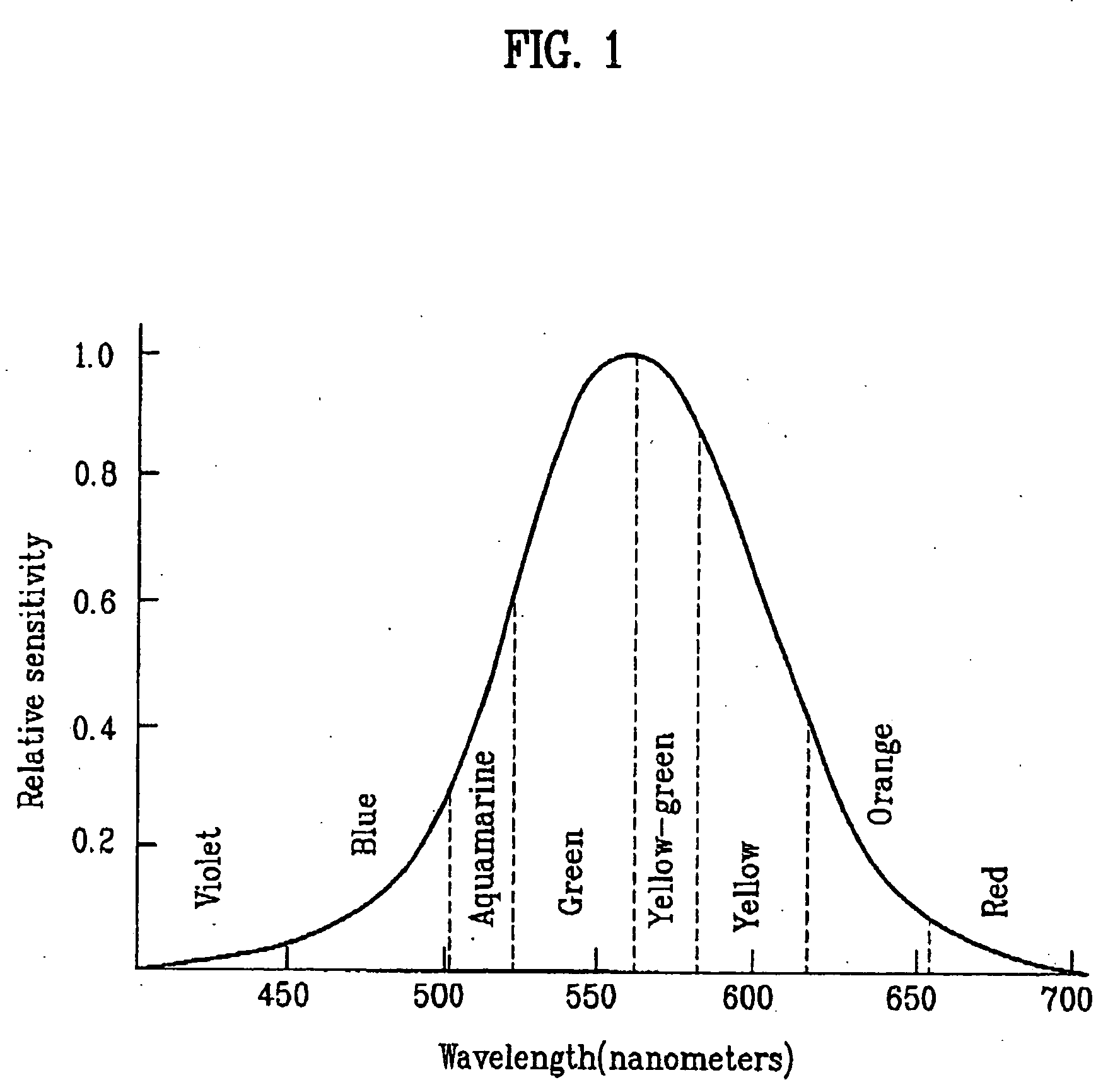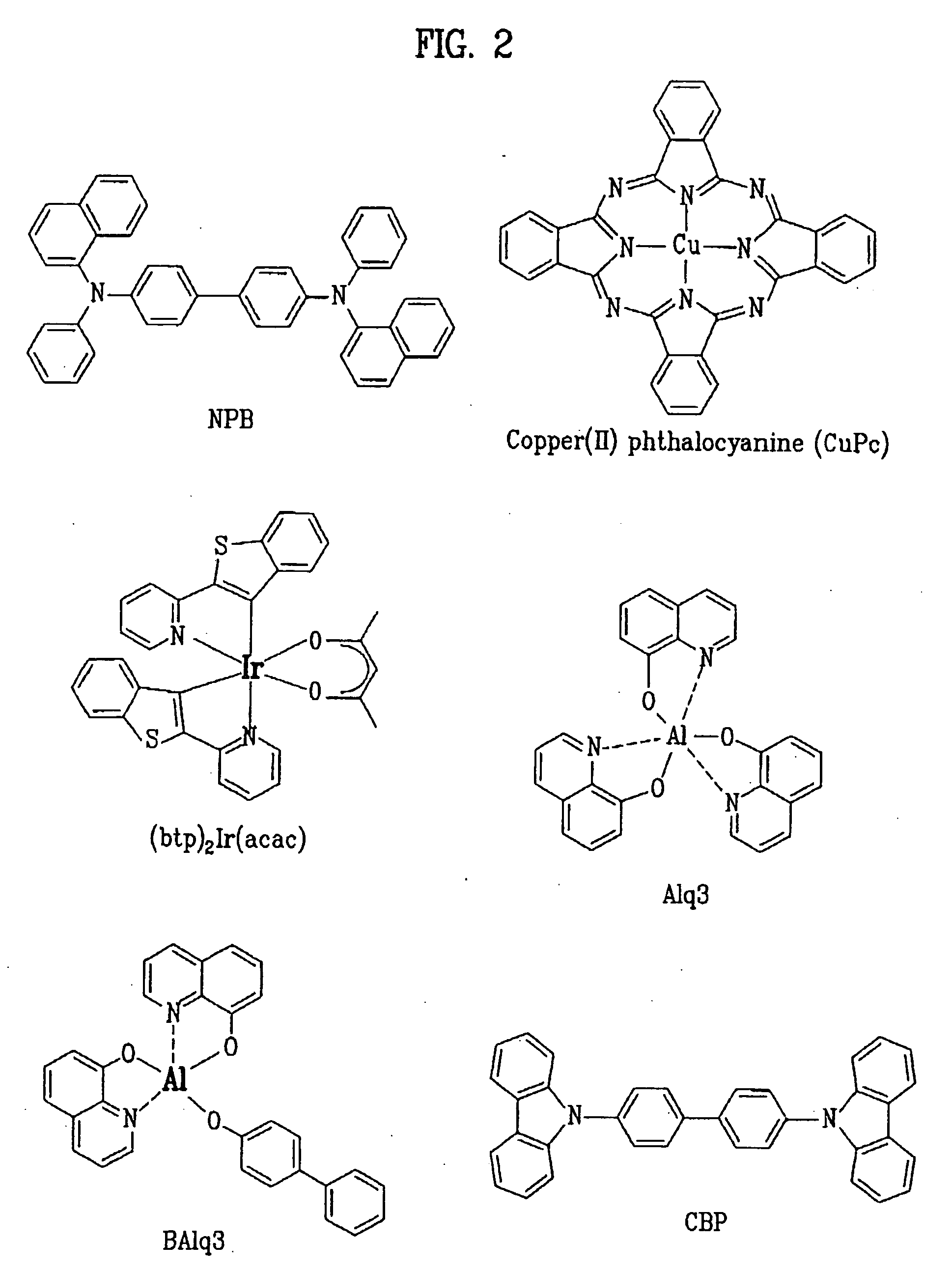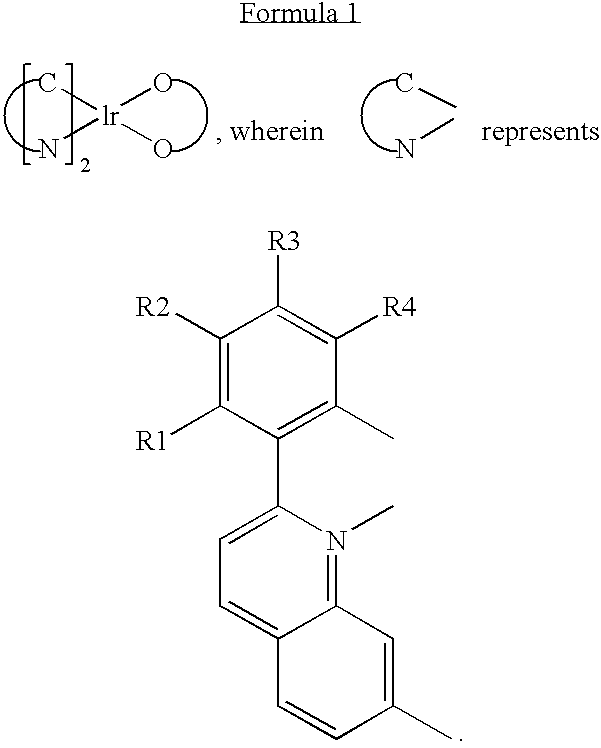Red phosphorescence compounds and organic electroluminescence device using the same
a technology of organic electroluminescence and red phosphorescence compounds, which is applied in the direction of indium organic compounds, organic chemistry, other domestic articles, etc., can solve the problems of difficulty in providing high light emission efficiency, and achieve high brightness, long durability, and high color purity
- Summary
- Abstract
- Description
- Claims
- Application Information
AI Technical Summary
Benefits of technology
Problems solved by technology
Method used
Image
Examples
embodiments
1. First Embodiment
[0037] An ITO glass substrate is patterned to have a light emitting area of 3 mm×3 mm. Then, the patterned ITO glass substrate is washed. Subsequently, the substrate is mounted on a vacuum chamber. The standard pressure is set to 1×10−6 torr. Thereafter, layers of organic matter are formed on the ITO substrate in the order of CuPC (200 Å), NPB (400 Å), CBP+(btp)2Ir(acac)(7%) (200 Å), a hole blocking layer (100 Å), Alq3 (300 Å), LiF (5 Å), and Al (1000 Å).
[0038] When forming a hole blocking layer using BAlq, the brightness is equal to 689 cd / m2 (8.1 V) at 0.9 mA. At this point, CIE x=0.651, y=0.329. Furthermore, the durability (half of the initial brightness) lasts for 1600 hours at 2000 cd / m2.
second embodiment
2. Second Embodiment
[0039] An ITO glass substrate is patterned to have a light emitting area of 3 mm×3 mm. Then, the patterned ITO glass substrate is washed. Subsequently, the substrate is mounted on a vacuum chamber. The standard pressure is set to 1×10−6 torr. Thereafter, layers of organic matter are formed on the ITO substrate in the order of CuPC (200 Å), NPB (400 Å), BAlq+A-2(7%) (200 Å), Alq3 (300 Å), LiF (5 Å), and Al (1000 Å).
[0040] At 0.9 mA, the brightness is equal to 1448 cd / m2 (6.2 V). At this point, CIE x=0.644, y=0.353. Furthermore, the durability (half of the initial brightness) lasts for 8000 hours at 2000 cd / m2.
third embodiment
3. Third Embodiment
[0041] An ITO glass substrate is patterned to have a light emitting area of 3 mm×3 mm. Then, the patterned ITO glass substrate is washed. Subsequently, the substrate is mounted on a vacuum chamber. The standard pressure is set to 1×10−6 torr. Thereafter, layers of organic matter are formed on the ITO substrate in the order of CuPC (200 Å), NPB (400 Å), BAlq+A-5(7%) (200 Å), Alq3 (300 Å), LiF (5 Å), and Al (1000 Å).
[0042] At 0.9 mA, the brightness is equal to 1378 cd / m2 (6.0 V). At this point, CIE x=0.659, y=0.351. Furthermore, the durability (half of the initial brightness) lasts for 7000 hours at 2000 cd / m2.
PUM
| Property | Measurement | Unit |
|---|---|---|
| voltage | aaaaa | aaaaa |
| thickness | aaaaa | aaaaa |
| thickness | aaaaa | aaaaa |
Abstract
Description
Claims
Application Information
 Login to View More
Login to View More - R&D
- Intellectual Property
- Life Sciences
- Materials
- Tech Scout
- Unparalleled Data Quality
- Higher Quality Content
- 60% Fewer Hallucinations
Browse by: Latest US Patents, China's latest patents, Technical Efficacy Thesaurus, Application Domain, Technology Topic, Popular Technical Reports.
© 2025 PatSnap. All rights reserved.Legal|Privacy policy|Modern Slavery Act Transparency Statement|Sitemap|About US| Contact US: help@patsnap.com



